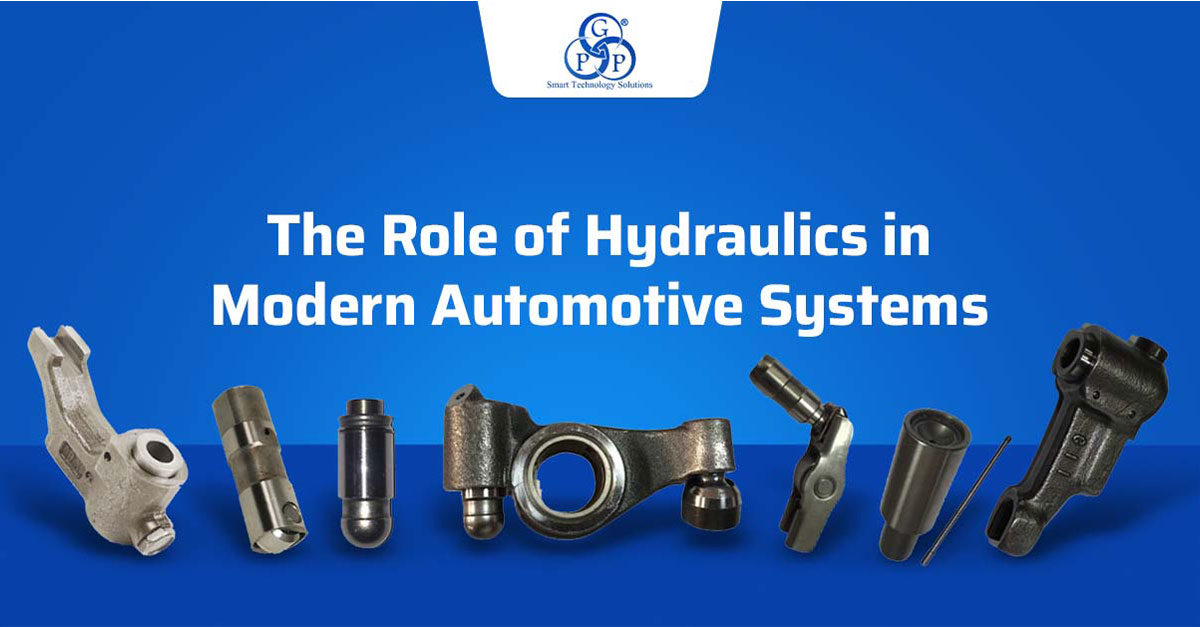
The Role of Hydraulics in Modern Automotive Systems
05 May, 2025
The Role of Hydraulics in Modern Automotive Systems
Hydraulic systems are integral to modern automotive engineering, offering crucial support not just in external systems like braking, steering, and suspension, but more importantly, within the engine valve train itself. At the heart of this evolution are advanced components such as Hydraulic Lash Adjusters (HLA) and Exhaust Brake Systems (EBS), which are key to improving engine performance, efficiency, and emissions compliance.
In this blog, we will delve into the pivotal role hydraulics play across various applications, while highlighting the relevance of HLAs and EBS in enhancing modern engine architecture.
Hydraulic Systems in Engine Valve Trains
Let us begin with an essential, though often overlooked, area of hydraulic application which is the engine valve trains.
-
Hydraulic Lash Adjusters (HLA): HLAs are precision-engineered components that maintain zero lash between engine valve train components such as rocker arms, pushrods, or lifters. By using pressurized oil to automatically adjust the clearance, HLAs eliminate the need for manual valve lash adjustments, reduce noise, and enhance overall efficiency. Their role becomes particularly significant in modern engines striving to meet stringent emission standards and improve fuel economy.
-
Exhaust Brake Systems (EBS): EBS plays a vital role in engine braking, especially in commercial and heavy-duty vehicles. The EBS uses hydraulic actuation to control exhaust valves, creating backpressure in the engine that assists in slowing down the vehicle. This not only reduces the load on service brakes but also enhances overall vehicle control and safety on downhill gradients.
Hydraulic Braking Systems
Let us now examine how hydraulic systems operate in vehicle braking mechanisms.
-
Mechanism and Components: Traditional hydraulic braking systems work by transmitting force through a liquid medium. When a driver presses the brake pedal, the master cylinder generates hydraulic pressure, which is then transmitted through brake lines to the wheel cylinders or calipers. These components apply the brake pads or shoes against rotors or drums to decelerate the vehicle. Key components include:
- Master Cylinder: Converts mechanical pedal force into hydraulic pressure.
- Brake Lines: Transport pressurized brake fluid to the braking system.
- Calipers and Wheel Cylinders: Engage brake pads or shoes for effective stopping power.
-
Electro-Hydraulic Braking: Modern advancements have led to electro-hydraulic systems, integrating sensors and actuators with traditional hydraulics. These offer faster response, greater efficiency, and pave the way toward fully electronic "brake-by-wire" systems, improving both performance and weight optimization.
Hydraulic Steering Systems
Hydraulics also play a crucial role in steering control.
-
Traditional Power Steering: In conventional systems, a hydraulic pump powered by the engine delivers fluid to assist in turning the wheels, thereby reducing the physical effort required by the driver.
-
Electro-Hydraulic Steering: This newer system blends hydraulic force with electronic regulation. It provides variable assistance based on speed and driving conditions allowing for easier manoeuvring at low speeds and enhanced stability at higher speeds. It also improves fuel economy by reducing the load on the engine.
Hydraulic Suspension Systems
Hydraulic technology has also transformed suspension systems for better control and comfort.
-
Active Suspension Systems: These systems use hydraulic actuators, regulated in real-time by electronic control units, to adjust damping forces. This reduces body roll and improves ride quality by adapting to road conditions dynamically.
-
Active Body Control (ABC): Featured in high-end vehicles like those by Mercedes-Benz, ABC uses hydraulic servomechanisms to stabilize the car body during acceleration, braking, and cornering while ensuring superior comfort and handling.
Future Trends and Innovations
Hydraulic systems are rapidly evolving to meet the demands of next-generation vehicles.
-
Integration with Electric and Autonomous Vehicles: With the rise of EVs and self-driving cars, electro-hydraulic systems are being tailored for compact, efficient, and precise operation compatible with electric drivetrains and autonomous control requirements.
-
Development of Lightweight Materials: The use of high-strength polymers and lightweight alloys is helping reduce the weight of hydraulic components, thereby improving fuel efficiency without compromising performance.
-
Environmental Concerns: Sustainability is becoming a key driver. Innovations such as biodegradable hydraulic fluids and leak-proof systems are being developed to minimize environmental impact and improve longevity.
Conclusion
Hydraulic systems are foundational to the functionality and performance of modern vehicles, not only in visible mechanisms like brakes and steering but also in critical engine components such as HLAs and EBS. These technologies are central to optimizing engine performance, ensuring emissions compliance, and improving safety and efficiency.
At GPP, we recognize the transformative role hydraulic innovation plays in today’s automotive industry. As a trusted manufacturer of high-quality valves and allied engine components, we remain committed to supporting this evolution with precision-engineered solutions that meet the highest standards of performance and reliability.

